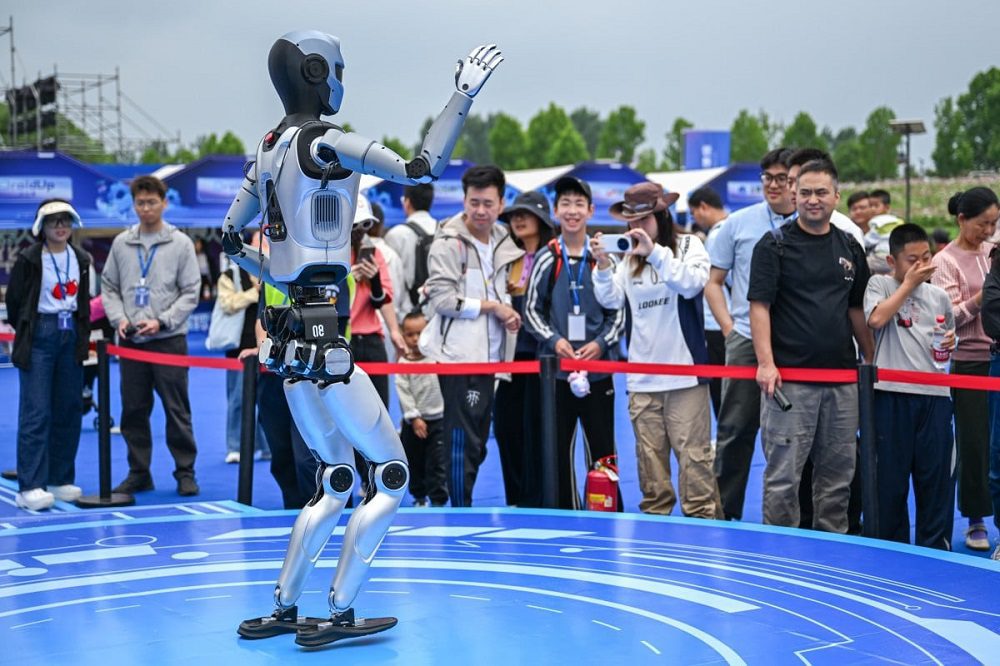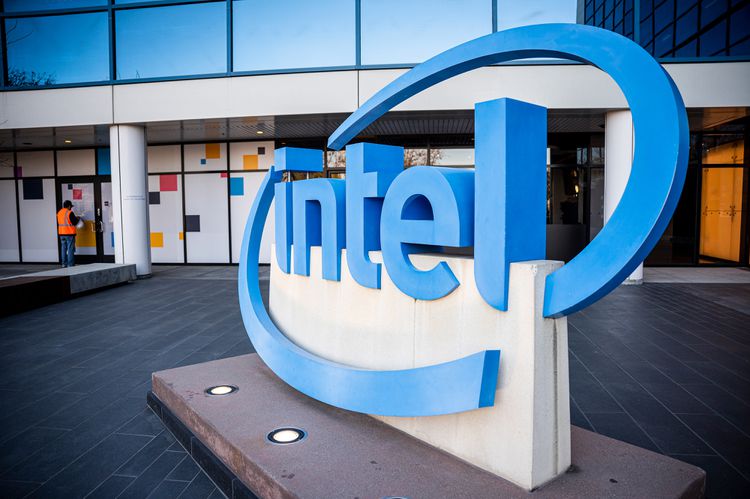
China Unveils ‘RoboBrain’ for Humanoid Robots, a groundbreaking AI model designed to power the next generation of humanoid robots, marking a significant milestone in Beijing’s ambitious pursuit of global leadership in robotics and artificial intelligence. Launched by a Beijing-based academy, RoboBrain aims to enhance the cognitive and operational capabilities of humanoid robots, enabling them to perform complex tasks with human-like precision and adaptability. This development underscores China’s strategic focus on integrating advanced AI into robotics, positioning the nation at the forefront of technological innovation. As the global robotics market continues to expand, RoboBrain could redefine how intelligent machines interact with the world, from industrial applications to everyday human assistance.
Key Takeaways
Innovative AI Model: RoboBrain is an open-source AI designed to enhance humanoid robots’ cognitive and functional abilities.
China’s Tech Ambitions: The launch reflects China’s goal to lead in global AI and robotics innovation.
Humanoid Robot Advancements: RoboBrain enables robots to perform complex tasks with greater autonomy and precision.
Global Impact: This development could influence industries like manufacturing, healthcare, and personal assistance.
Open-Source Advantage: RoboBrain’s open-source nature encourages global collaboration and innovation in robotics.
The Rise of RoboBrain: A New Era for Humanoid Robots
Contents
- 1 What is RoboBrain?
- 2 Why Humanoid Robots Matter
- 3 Beijing’s Vision for Technological Dominance
- 4 The Role of Open-Source Innovation
- 5 Advanced Cognitive Capabilities
- 6 Applications Across Industries
- 7 Redefining Human-Robot Interaction
- 8 Economic and Social Implications
- 9 Competing on the Global Stage
- 10 Technical and Ethical Challenges
- 11 The Road Ahead for RoboBrain
- 12 1. What is RoboBrain?
- 13 2. How does RoboBrain differ from other AI models?
- 14 3. What are the applications of RoboBrain-powered robots?
- 15 4. Why is RoboBrain open-source?
- 16 5. How does RoboBrain impact China’s tech ambitions?
- 17 6. What challenges does RoboBrain face?
- 18 7. How does RoboBrain enhance human-robot interaction?
- 19 8. Can RoboBrain-powered robots replace human workers?
- 20 9. How does RoboBrain compare to other humanoid robot technologies?
- 21 10. What is the future of RoboBrain?
What is RoboBrain?
RoboBrain is an advanced artificial intelligence model developed to serve as the “brain” for humanoid robots. Unlike traditional AI systems, RoboBrain is engineered to process vast amounts of data in real-time, enabling robots to make decisions, learn from their environments, and interact with humans more naturally. This AI model, unveiled in Beijing, represents a significant step forward in creating robots that can mimic human cognitive functions, such as problem-solving, contextual understanding, and adaptive learning. By leveraging cutting-edge neural networks and natural language processing (NLP), RoboBrain equips robots with the ability to handle dynamic tasks in diverse settings, from factories to homes.
Why Humanoid Robots Matter
Humanoid robots, designed to resemble and function like humans, are becoming increasingly vital in various sectors. According to a 2024 report by the International Federation of Robotics, the global market for humanoid robots is expected to grow at a compound annual growth rate (CAGR) of 22.6% from 2025 to 2030, driven by advancements in AI and automation. These robots are poised to revolutionize industries by performing tasks that require human-like dexterity, decision-making, and interaction. From assisting in healthcare to automating repetitive tasks in manufacturing, humanoid robots powered by AI like RoboBrain could transform how we work and live.
China’s Strategic Push in AI and Robotics
Beijing’s Vision for Technological Dominance
China’s launch of RoboBrain aligns with its broader strategy to dominate the global AI and robotics landscape. The country has invested heavily in AI research, with the Chinese government allocating over $15 billion annually to AI development, according to a 2024 report by the Center for Strategic and International Studies. Beijing’s “Made in China 2025” initiative emphasizes advancements in robotics, AI, and automation, aiming to position China as a global tech superpower. RoboBrain is a product of this vision, showcasing China’s ability to innovate at the intersection of AI and robotics.
The Role of Open-Source Innovation
One of RoboBrain’s standout features is its open-source framework, which allows developers worldwide to access, modify, and contribute to its codebase. This approach fosters global collaboration and accelerates innovation in humanoid robotics. By making RoboBrain open-source, China encourages researchers and companies to build upon its foundation, potentially leading to faster advancements in robot capabilities. This strategy also positions China as a leader in the global AI community, inviting international participation while showcasing its technological prowess.
How RoboBrain Powers Humanoid Robots
Advanced Cognitive Capabilities
RoboBrain’s core strength lies in its ability to process complex data inputs and make autonomous decisions. Using deep learning and neural network architectures, RoboBrain enables robots to understand their surroundings, recognize objects, and respond to verbal or visual cues. For example, a humanoid robot powered by RoboBrain could navigate a crowded room, assist with household tasks, or even engage in meaningful conversations, all while learning from its interactions to improve performance over time.
Real-Time Learning and Adaptation
Unlike traditional robotic systems that rely on pre-programmed instructions, RoboBrain uses real-time learning to adapt to new environments. This capability is critical for applications in dynamic settings, such as disaster response or medical assistance, where robots must respond to unpredictable variables. By integrating semantic understanding and contextual awareness, RoboBrain ensures that robots can interpret nuanced situations, making them more versatile and reliable.
Natural Language Processing (NLP)
RoboBrain’s NLP capabilities allow humanoid robots to understand and respond to human speech in a conversational manner. This feature is particularly valuable for applications in customer service, education, and healthcare, where robots need to communicate effectively with humans. For instance, a RoboBrain-powered robot could assist elderly patients by understanding their requests and providing tailored responses, enhancing their quality of life.
Applications Across Industries
RoboBrain’s versatility makes it suitable for a wide range of applications. In manufacturing, humanoid robots equipped with RoboBrain can optimize production lines by performing precision tasks alongside human workers. In healthcare, these robots could assist surgeons or provide companionship to patients. Additionally, RoboBrain’s potential in education, logistics, and personal assistance highlights its transformative impact across multiple sectors.
The Global Impact of RoboBrain
Redefining Human-Robot Interaction
The introduction of RoboBrain could redefine how humans and robots interact. By enabling robots to process emotions, understand context, and learn from experiences, RoboBrain brings us closer to a future where robots are seamless extensions of human capabilities. This shift could lead to more intuitive and collaborative human-robot partnerships, particularly in environments requiring empathy and adaptability, such as eldercare or education.
Economic and Social Implications
The widespread adoption of RoboBrain-powered robots could have significant economic and social implications. On one hand, increased automation could boost productivity and reduce labor costs in industries like manufacturing and logistics. On the other hand, it raises questions about job displacement and the need for workforce reskilling. A 2025 study by McKinsey estimates that automation could displace up to 30% of current jobs by 2030, highlighting the need for policies to address these challenges.
Competing on the Global Stage
China’s RoboBrain positions the country as a formidable competitor in the global robotics market, challenging established players like the United States and Japan. With companies like Boston Dynamics and SoftBank also advancing humanoid robot technology, RoboBrain’s open-source model gives China a unique edge by fostering global collaboration. This competitive dynamic could accelerate innovation, benefiting consumers and industries worldwide.
Challenges and Future Prospects
Technical and Ethical Challenges
While RoboBrain represents a leap forward, it also faces technical and ethical challenges. Developing AI that can reliably mimic human cognition requires overcoming issues like data bias, processing limitations, and energy efficiency. Ethically, the deployment of humanoid robots raises concerns about privacy, autonomy, and the potential misuse of AI. China’s government and researchers will need to address these issues to ensure RoboBrain’s responsible development and deployment.
The Road Ahead for RoboBrain
Looking ahead, RoboBrain’s success will depend on its ability to scale and integrate with existing robotic systems. Continued investment in AI research, coupled with global collaboration, will be crucial for refining RoboBrain’s capabilities. As China pushes for advancements in 5G, IoT, and edge computing, RoboBrain could benefit from faster data processing and connectivity, further enhancing its performance in real-world applications.
Summary
China’s unveiling of RoboBrain marks a pivotal moment in the evolution of humanoid robots and artificial intelligence. By providing an open-source AI model capable of advanced cognitive functions, China is not only advancing its technological ambitions but also inviting global collaboration to shape the future of robotics. RoboBrain’s ability to enable robots to learn, adapt, and interact with humans naturally positions it as a game-changer in industries ranging from manufacturing to healthcare. However, its success will depend on overcoming technical and ethical challenges while fostering responsible innovation. As China continues to lead in AI and robotics, RoboBrain could set the stage for a new era of intelligent machines that transform how we live and work.
Frequently Asked Questions (FAQs)
1. What is RoboBrain?
RoboBrain is an open-source AI model developed in Beijing to power humanoid robots, enabling them to perform complex tasks with human-like intelligence and adaptability.
2. How does RoboBrain differ from other AI models?
Unlike traditional AI systems, RoboBrain focuses on real-time learning, natural language processing, and contextual understanding, making it ideal for humanoid robots.
3. What are the applications of RoboBrain-powered robots?
These robots can be used in manufacturing, healthcare, education, logistics, and personal assistance, performing tasks like precision assembly, patient care, and customer service.
4. Why is RoboBrain open-source?
Its open-source nature allows global developers to contribute to and build upon the AI model, fostering innovation and accelerating advancements in robotics.
5. How does RoboBrain impact China’s tech ambitions?
RoboBrain supports China’s goal to lead in AI and robotics, aligning with initiatives like “Made in China 2025” to establish technological dominance.
6. What challenges does RoboBrain face?
Technical challenges include data bias and processing limitations, while ethical concerns involve privacy, autonomy, and the potential misuse of AI.
7. How does RoboBrain enhance human-robot interaction?
By enabling robots to understand context, process emotions, and communicate naturally, RoboBrain creates more intuitive and collaborative human-robot interactions.
8. Can RoboBrain-powered robots replace human workers?
While they can automate certain tasks, their primary role is to complement human workers, boosting productivity in industries like manufacturing and healthcare.
9. How does RoboBrain compare to other humanoid robot technologies?
RoboBrain’s open-source model and focus on cognitive capabilities give it a competitive edge, though it faces rivalry from companies like Boston Dynamics.
10. What is the future of RoboBrain?
The future depends on scaling its capabilities, addressing ethical concerns, and integrating with technologies like 5G and IoT to enhance performance.



